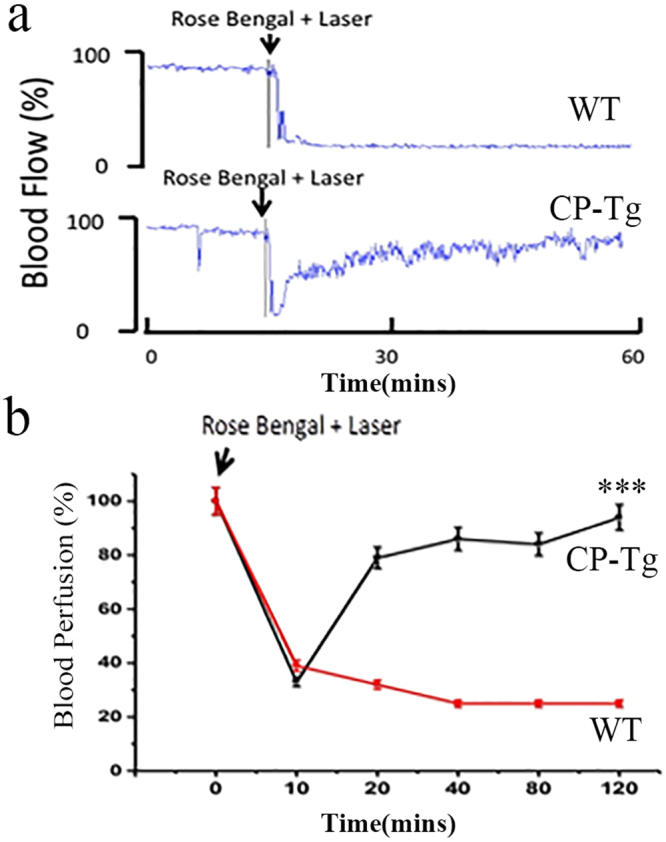Figure 4.

CP-Tg mouse resistance to Rose Bengal/laser beam-induced thrombotic stroke and death. (a) Real-time monitoring of carotid artery blood flow before and after Rose Bengal/laser-induced thrombotic occlusion of carotid arteries in a wild-type (top) and a CP-Tg mouse (bottom). The percentage change in reperfusion was calculated at different time intervals and plotted over time. Red squares and black squares indicate changes in perfusion in WT and TG mice, respectively. Rose Bengal (50 mg/kg) was injected through the tail vein, and the time of injection was considered as zero minutes. Blood reperfusion was recorded for a period of 120 minutes. (b) Average curves from the two groups of mice obtained using the identical method described in panel A (n = 10, p < 0.01). The data shown are the mean ± SD. The data from the last time point were analyzed by the student’s t-test.
